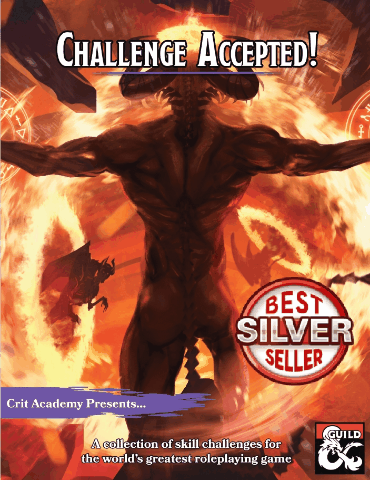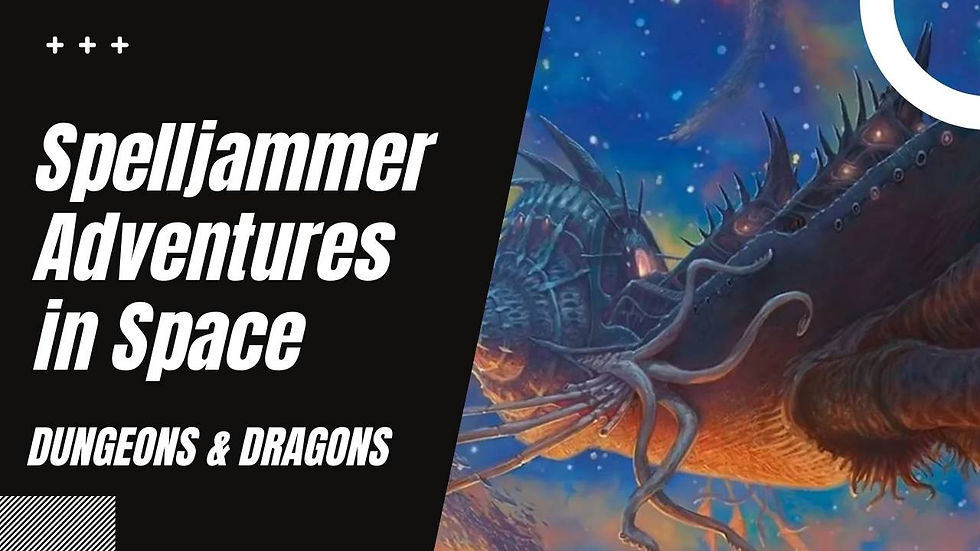Class Analysis: Sorcerer and Warlock
- Justin Handlin

- Jan 11, 2020
- 7 min read

Today we break down the features of the Sorcerer and Warlock in the Dungeon and Dragons Player Handbook. We touch on the mechanics and how they function, as well how we would reflavor them to give them a fresh and unique feel.
The Sorcerer is one of my favorites, as the book encourages you to come up with unique reasons for your bloodline traits, it's also one of the few that I believe is often underestimated. I think this has a lot to do with the belief that, anything the sorcerer can do, the wizard can do better. Sure the wizard has more spell slots and more spells, giving them a lot of utility, but the sorcerer can break the game in a way that no other class really can, through action economy. The ability to cast spells as a bonus action, or twin the to hit two targets with one spell, gives them quite the upper hand on the wizard.
The Warlock is an interesting character as they make a pact with a higher power. This immediately means interesting roleplay potential. For instance, warlocks are very well known for their power cantrip eldritch blast. On its own, this can seem dull, but if you consider tying its description to your patron, it becomes very flavorful. Picking Cthulhu as your patron? Then your eldritch blast may be a burst vile green ooze looking water that takes on the form of a creature of the water such as a squid or octopus. Sounds way cooler than a simple eldritch blast right?
Unearthed Tips and Tricks: New and reusable D&D content for you to bring with you on your next adventure.
Character Concept:
Master of Weapons
We’ve all seen the fighter who specializes in one specific sword, passed down through his
family line for generations. With that sword, he’s unmatched in combat, and he will avenge
the death of his grandfather and save the land from evil. Imagine if, one day, he runs
into something that’s immune to slashing damage, or it destroys any weapon that touches it. That fighter is going to be in a tough spot, isn’t he?
This character concept is the opposite. Rather than focusing on using one weapon, this character focuses on using ALL weapons. Longsword? Check. Crossbow? Check. Light mace? Check. Ranseur? I don’t know what that is, but check. Siangham? I don’t think that exists anymore (or ever, historically speaking) but sure, check. If you can kill an enemy with it, the Master of Weapons wants one and probably has proficiency with it. Simply owning the weapons isn’t enough, too. The Master of Weapons is going to use their weapons whenever possible by swapping out weapons every round and even supplying extras for party members that were disarmed or had their weapons destroyed by an ooze or lava worm.
Why is the Master of Weapons so obsessed? It could just be that they want to be prepared for every situation, and having multiple weapons of various damage types and ranges is a good way to accomplish that. It could be something as lofty as having a life goal of someday owning one of every type of weapon in the world or wanting to train in every fighting style that exists. Whatever the case, you can always tell when the Master of Weapons is near because of that unique jangling of a dozen different weapons rubbing against each other. The party’s home base is sure to have an entire wall decorated with thirty different varieties of one handed d8 slashing weapons. Tavern brawler is also an excellent feat to add to this sort of concept. Turning anything into a weapon fits the theme well.
Monster Variant:
Harassing Grassy Gnoll
Gnolls who find themselves to be physically weaker than their kin will often try to find
new and inventive ways to help out their more brutish brethren. They choose to sharpen their minds and focus on their ranged techniques.
Original Monster: Gnoll
New Features:
Superiority Dice. The gnoll has two superiority dice, both of which are d6. These die are used to fuel its distracting shot maneuver. A superiority die is expended when the gnoll uses it. The gnoll gains the expended superiority dice when it finishes a short or long rest.
Distracting Shot. When the gnoll hits a creature with a ranged weapon attack, it can expend one superiority die to distract the creature, giving its allies an opening. The gnoll adds the superiority die to the attack’s damage roll. The next attack roll against the target by an attacker other than the gnoll has advantage if the attack is made before the start of the gnolls next turn.
Encounter Concept:
Time Will Tell
The adventurers are gathered together before a grieving mother and father. It seems that
something terrible has happened: someone, or something, has spirited away their infant
child in the dead of night. The parents briefly witnessed the kidnapper, but they’ve lost their
memory of what happened after. The heroes are asked to find out what happened to the child, and return the babe safely to the parents.
The party tracks down and confronts the kidnapper, ready to slay or subdue a criminal to bring them to justice, but it’s not quite so simple.
The would-be kidnapper is in fact a powerful mage who claims that premonitions have shown him that soon a great calamity will befall the land and subject the world to what he calls “The Dead Days”. He has seen that this child is going to play a pivotal role in the upcoming calamity, and by devouring this child, the mage can save countless innocent lives and possibly stop the calamity altogether.
The players are then faced with a choice: do they return the child safely to its parents possibly fighting and killing this mage in the process), and potentially subject the world to a great calamity? Or do they let this mage devour a child to prevent loss of life, leaving the child’s parents to mourn the loss of their kin? How are the players going to determine whether the mage is even telling the truth? Assuming this prophecy is true, could
there be ways to prevent the cataclysm that don’t involve killing an infant? Only time will tell.
Magic Item:
Wondrous Item, very rare (requires attunement)
The Howling Halo is a magic ring that, when worn, allows the wearer to use the Druid’s Wild
Shape ability once per day. However, when using it, the wearer turns into a specific form: a
Wolf(MM or PHB).
While this item is fairly simple in its function, the DM can feel free to change any of its
features to fit the campaign. Instead of a wolf, this item might allow the wearer to turn into
some other specific creature - even ones that a Druid of that level might not normally be
able to turn into - such as a bird, an ooze, or a spider. In this way, a DM can put this ring
in a place where the creature it grants access to will be given an advantage in completing the current quest. Imagine if the players are sent on a quest to hunt a legendary golden stag. On their hunt, they find the corpse of an orc wearing this ring, and when a player puts it
on, they become the golden stag they were sent to hunt!
DM Tip:
The Cut Scene
The players have completed their quest, defeated the demon, and closed the evil portal.
They’re traveling back to town to sell their recovered treasure, and recuperate from the
adventure they’ve just completed. As the players start flipping through the rulebooks to level
up and pick out magic items, the DM gets their attention. Suddenly, the story is not following the characters; it’s following the dark sorcerer that summoned the demon. He’s apologizing to the demon prince master he follows, and he is vowing to succeed next time, lest his soul be torn from his body. Meanwhile, back at the table, the players are looking at each other uneasily. They’ve realized that their quest may not be over just yet.
Cut scenes are commonplace in movies and video games; there’s no reason they can’t work
in tabletop games as well. Take the opportunity to show the players a bit of what’s going on
behind the scenes. They could find out what happened to that magical sword they sold
to the shopkeeper, or they could see what’s happening back home while away on a quest.
You can give the players plot details they might never have gotten otherwise, and you can show them that there’s more going on in the world than just what happens to their party. You’ll need to be careful and talk to your players about using metagame knowledge. If you
show a cut scene of a new ally secretly being a villain, it would be poor form for the players
to have their characters suspect that ally without any in-game justification. A group of
mature players shouldn’t have much difficulty compartmentalizing their information.
When done well, cutscenes can enrich a game and make it feel more like a cinematic
experience rather than just a game. However, when done poorly, they can derail a campaign
and make it hard for players to play their characters. Use them wisely!
Player Tip:
Ready your Action
How often do you ready your actions? Maybe you ready them in combat , but how often do
you ready them out of combat?
Readying can be an incredibly powerful tactic when used well. Enemies that hide behind cover to attack can be foiled by readying an action to strike them when they pop out to attack. A rogue is at their most deadly when attacking with an ally, so if no allies are adjacent to your target, readying an action until an ally joins you will let you gain Sneak Attack when you’d otherwise have to wait a round. You could even do something as simple as keeping your weapons drawn when searching a dungeon, so you can ready an attack if something comes around the corner. Just be careful; what comes around the corner might not be an enemy!
It’s important to note, of course, that if you set a trigger for your readied action and that trigger never occurs, then your action was wasted. In fact, if you ready a spell and the trigger never occurs, then that spell slot is wasted along with the action you spent to ready it! For this reason, be extremely careful when readying any spell higher than a Cantrip!
We hope you enjoyed your experience here on Crit Academy, if you did, please consider sharing our show and leaving a review here on itunes.
Support Us:
Subscribe to our Blog and be entered to win phat lootz every week.
Visit our website at www.critacademy.com or become a patron donor and get additional phat loot!















Comments